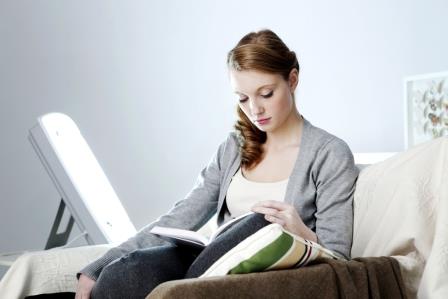Psychic Blog
Seasonal Affective Disorder
6 Nov 2019

Seasonal Affective Disorder (otherwise known as SAD), are you one of the many people that suffer from it? If, you do – then the chances are you anticipate the changing of seasons with a sense of dread. As ‘feeling blue’ and lethargy become your new norm…
So, who is impacted by SAD?
It would seem that women are much more likely to suffer than men.
The most common age range is from 15 years old to fifty years old.
You may be more affected if you are already struggling with major stress or a big life event.
There are varying degrees of SAD, so as much as a 1/3rd of the population may experience some symptoms.
What are some of the symptoms of SAD?
You may feel emotional, and more moody than normal.
It’s possible you will crave comforting foods, particularly carbohydrates.
You may feel tired and fatigued without cause.
In many cases, you may have a sense of just wanting to be left alone.
Why does Seasonal Affective Disorder occur?
There is no fully conclusive answer as to why some people experience SAD and others do not. But one idea is that people who suffer with SAD are much more sensitive to the fluctuations in serotonin (mood regulating) levels, that occur as a result of changing levels of daylight.
Equally, if the above impact is seen, it is likely that more night-time hours also cause a higher level of melatonin (sleep hormone), in SAD sufferers. Which might account for the fatigue type feelings.
What can you try to alleviate the symptoms?
If finances allow, you could try taking a holiday in the winter months, to somewhere that will have sunny days. January is very often one of the worst for SAD, as the anti-climax of Christmas and New Year can add to the depressed type feelings.
Build day-light periods into every day. Whilst you may not feel like it, getting outside during the darker months is highly beneficial. Whilst a 30-minute walk each day, may not entirely cure your ills, it will go a long way to raising your spirits. Try to schedule the walk when the sun/daylight is at its brightest.
The above options are great, but may only take you so far. Many people have experienced some success and a reduction in symptoms from using a Light Box, a form of Light Therapy. It is something you have to commit to using on a day-to-day basis, but could be well worth the effort.
If you have self-diagnosed, it is probably a good idea to see your GP. There may be things they can advise, from supplements like fish oils and vitamin D, to Cognitive Behavioural Therapy, to medications.
TweetBrowse Our Blog
Categories
- Blog Home
- Angels
- Astrology
- Book Reviews
- Celebrity
- Crystals
- General
- Love
- Mediumship
- Paranormal
- Readers
- Seasons
- Special-Offer
- Spirituality
- Superstitions
- The Psychic Gift
- Wellbeing